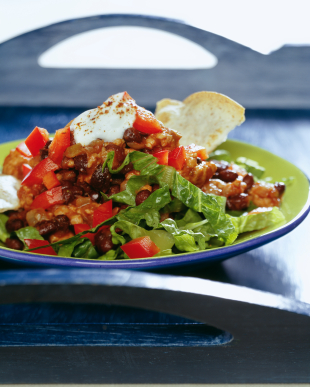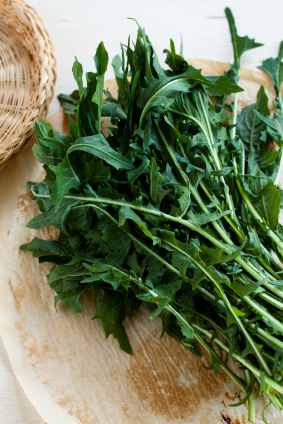
I have three teens in college. (Yikes, I know!) They were talking about drug abuse the other day. They were all in complete agreement on this– the most abused drug in high school and college students is the medication for ADD/ADHD, Adderall. This addictive drug is a legally prescribed medication for too many kids–old and young.
But the big problem is the kids who are selling it, buying it and using it–not to treat ADHD–but to help with school work. The problem is, it’s very addictive and on top of that it has some not-so-pleasant adverse effects.
Adderall came on the scene just a few years ago and has replaced Ritalin as the drug of choice for treatment of ADD/ADHD. Adderall is considered an amphetamine—and in street language, it’s just “speed”. Adderall use and abuse is very widespread and this has a lot to do with the fact that it’s the most frequently prescribed brand-name stimulant in the U.S.
According to the FDA, amphetamines generally tend to have a high level of abuse. And long-term use of amphetamines can create addiction, since the tolerance for this type of medication builds quickly and more and more is needed to do the create the same effect.
Besides physical addiction, amphetamine users often have a psychological dependence as well. Students often use Adderall to get their schoolwork done, especially in a highly competitive academic environment, and often are afraid to go without it, as they feel it will cause a reduction in their ability to perform academically.
Once a few begin to use it to improve academic performance, the bar is raised for the rest and it becomes difficult to compete without the added help.
And sadly, in many academic environments, where competition for grades and success is critically important, many students feel pressured to take medication just to even the field.
What makes Adderall use so scary is that drug companies are often the ones pushing the drugs. While this may help the the pharmaceutical companies, it certainly does not help the individuals taking this medication.
For many it may seem that taking a ‘magic pill’ is the easiest way, but there is an awful lot to consider before popping that pill.
Physicians and psychiatrists often prescribe Adderall without really checking to see if the patient actually has true ADD or ADHD.
And so, this highly addictive drug is now being used by many people who don’t even have ADD/ADHD. It has now become a performance-enhancing drug–helping students stay up late to study, concentrate better and stay awake in class.
So now you have students taking Adderall merely as a study aid. Students say the drug helps them stay very focused on their work, and helps them avoid having to take time out to eat or sleep.
Dextroamphetamine and other stimulants (which is one of the active ingredients in Adderall and Adderall XR) have chemical structures that are similar to key brain neurotransmitters called monoamines, which include norepinephrine and dopamine.
These drugs increase levels of these neurotransmitters in the brain. The neurotransmitters send signals to increase blood pressure and heart rate, constrict blood vessels, increase blood sugar levels, and opens the respiratory system. And early on, dopamine levels increase which is associated with a sense of euphoria that can accompany the use of stimulants.
Adderall is a potent mixture of amphetamines and is similar to a legalized form of methamphetamine, or “Meth”. Yes the same kind that comes from illegal “meth labs”.
In the case of Adderall, the FDA has approved it, and so given the green light to thousands of adults and children to use it legally.
Obviously since this is a potent amphetamine, off-label use and safety are big issues. For those with prescriptions, dosage is carefully monitored.
Those without prescriptions can only guess at a safe dose. And, Adderall and other ADD/ADHD drugs can react with other medications such as antidepressants, antacids, and diuretics and even some vitamin supplements with potentially serious side effects.
Besides the huge side effect of strong physical and psychological addiction, it comes with other side effects: anxiety, decreased appetite, difficulty sleeping, constant headache, stomachache, dry mouth, hair loss, weight loss, symptoms of depression, and in some cases, serious mood swings, touretts-like symptoms, aggression, feelings of dying, seizures, high blood pressure, swelling of the hands and feet, vomiting, dehydration, unexplained muscle pain, abdominal pain, sweating, delusions, hallucinations, and other psychotic episodes.
And even worse, heart attack, strokes and death. In 2005, Adderall was pulled from the Canadian market for a time, because 14 American children died from taking it as prescribed. Twelve other children had strokes from Adderall.
Long term use of Adderall usually causes a buildup of tolerance, so dosages need to be increased to get the same results. This is leads to abuse and overdosing on the drug.
And stopping the drug is tricky. After using it for any period of time, stopping causes extreme fatigue, disorganization, and mental depression. In other words, once it’s started, it’s very difficult to stop.
Here’s a little know scary fact about Adderall–the drug was originally introduced as a weight reduction drug for adults called Obetrol. Unfortunately it was found to be so extremely addictive that Obetrol was taken off the market.
And now here it is, the same drug, repackaged as an ADD/ADHD drug for children and adults.
Think about it–is this really anything you want your kids on—or yourself for that matter? Before taking the easy way out with a pill, think long and hard.
And keep in mind, Adderall has only been on the market for a few years so no long-term studies have really been done on it.
You or your child may very well be headed down the road of addiction to a powerful drug, and it may not necessarily be the best method to combat ADD/ADHD in the long run.
If you’re contemplating Adderall or some other drug for ADD/ADHD or other mood disorders it is worth considering that here are many ways to correct diet and lifestyle issues first and let the drug be the last resort.
Amphetamine withdrawal, which is mostly marked by exhaustion and mood swings, shouldn’t really last more than a few weeks if you give your body the rest and nutrition it is craving. Diet and exercise can help address most issues to varying degrees.
And, be patient, the withdrawal period and adjustment period takes time, so don’t expect miracles overnight. But by instituting some necessary changes in nutrition, lifestyle and coping skills, things will be far better down the road.
If you’re quitting Adderall, you probably haven’t been eating right, and your chances of having major nutritional deficiencies are even higher than the average person.
First of all, be sure to visit your doctor to have them gradually decrease the dosage to minimize the ‘crash’. This is done over a period of time depending on the dosage and gradually dropped until the medication is totally stopped.
The next big thing to do is to clean out the kitchen and remove the ‘junk’. Commercially raised meats, processed (packaged) foods, trans fats and overdose of omega 6 fats; grains, sugar, corn syrup, dyes and preservatives really do add to the problem in a big way.
After eliminating all the processed junk, add in grass fed, organic, all natural meats, wild caught fish and free-range chicken. Just by this step alone, you have eliminated a lot of hormones, antibiotics, preservatives and traces of toxins that remain in commercially processed meat.
A huge step and one that may make a very big difference…
Cut out all processed flours and sugars—that means packaged cookies, cakes, crackers, snacks, and chips. These things not only are full of sugar and high glycemic refined flours but are also usually made with either toxic trans fats or inflammatory omega 6 fats—something that is far to plentiful in the average diet.
Just by eliminating these unhealthy fats and adding in more brain healthy omega 3 fats, you may see a big improvement.
Symptoms of ADHD are often easily eliminated in 80 percent of children within a couple of weeks by merely supplementing with omega 3 fats and eliminating processed foods (especially refined sugars) from kids’ diets.
Best sources of naturally-occurring omega 3 fats are in grass fed meats, and wild caught fatty fish like salmon, halibut and sardines.
The cell membranes and synaptic endings of neurons in our brains and nervous systems are composed of DHA, an omega-3 essential fatty acid.
These cell membranes will not function properly unless protected with antioxidants. Since most people don’t get enough DHA, other types of fats such as trans fats and omega 6 fats end up being incorporated into the brain, but they do not function as well.
Other nutrients that have been found to be deficient in children or adults with ADD/ADHD are iron, zinc and magnesium.
· A 1994 study at Purdue University found that boys diagnosed with ADHD had lower levels of the Omega 3 essential fatty acid DHA (American Journal of Clinical Nutrition)
· A 1997 study found that 95% of ADHD children tested were deficient in Magnesium (Magnesium Research 10, 1997)
· A 1996 study found that ADHD children had much lower Zinc levels—about a third less than the average level of those without ADHD (Biological Psychiatry 40, 1996)
Necessary neurotransmitters in the brain and nervous system are manufactured by the body from dietary sources. In order for these neurotransmitters to function well, the correct fatty acids, B vitamins, magnesium, zinc, and vitamin C must all be present in sufficient amounts.
Dietary suggestions that will help—
1. Essential fatty acid supplements are VITAL (as in grass fed meats, fish oils, flaxseed oil, DHA / EFA supplements, and primrose oil). Generally, diet alone may not be enough, so supplementing with a good quality fish oil capsule is important.
1. Use natural nutritional supplements containing antioxidants, anti-inflammatory nutrients, vitamins, and essential minerals. The goal is to improve brain cell-to-cell communication, and avoid fillers, preservatives, etc. Often regular commercial brand supplements are full of dyes and fillers, so get good quality supplements at a local health food store.
1. Eat plenty of good fats (good fats are omega 3 fats, virgin olive oil, virgin coconut oil, healthy saturated fats, and flaxseed oil–reduce all others).
1. Eliminate trans-fats (man-made hydrogenated oils which can be incorporated into your brain structure – processed food are full of them). These fats are also worse for your heart than saturated fats and are potential carcinogens.
1. Avoid food additives and highly processed foods. Eat organic as much as possible. There IS a big difference.
6. Zinc–Mineral deficiencies can have very negative effects on both short and long term memory. Approximately 70% of Americans are actually zinc deficient, and research has shown time and time again that zinc and iron deficiencies can cause ADD-like symptoms. Additionally, zinc is much more effective than placebo in treating children labeled as ADD/ADHD, and zinc and iron supplementation increase the effectiveness of medications like Adderall in treating ADD/ADHD.
White spots on the nails can be a sign of zinc deficiency even when blood tests for zinc are normal. The expression, “No zinc, no think” is not without merit. Many studies have shown that zinc supplementation is helpful with memory, thinking and I.Q.
The best way to get more zinc is to optimize the diet. The richest sources of zinc are generally the high protein foods such as grass fed organ meats, grass fed beef, seafood (especially shellfish), nuts, and beans.
7. Iron–Studies show that cognitive development can also be impaired when there are low iron blood levels. Symptoms of iron deficiency include low energy/feeling weak; pale skin lining your eyes, gums, and nails; excessive irritability; frequent head rushes when you stand up quickly; brittle and pale/white fingernails; rapid bounding heart rate; severe menstrual pain and bleeding; brittle hair and hair that falls out easily during gentle brushing; depression; headaches. However, a borderline deficiency may produce little or no obvious symptoms.
Some good dietary sources of iron include: grass fed beef liver, oysters, free range organic poultry, organic eggs (especially the yolks), wild caught salmon, beans, kale, broccoli, raisins, prunes, and whole grains.
8. B Vitamins–Deficiencies in B vitamins, particularly vitamin B1 and choline may also be involved. Best to take a full spectrum B vitamin supplement. B vitamins nourish the nervous system and create a calming effect, helping to eliminate anxiety, nervousness and irritability.
9. L-Tyrosine–protein contains the essential amino acid l-tyrosine, which is the chemical from which dopamine in synthesized. Whether you believe you have an iron/zinc deficiency or not, protein intake is essential post-Adderall to combat the withdrawal: dopamine deficiency. Adderall causes your body to release dopamine, the neurotransmitter responsible for happiness and motivation, much more rapidly than your body can produce it, depleting your natural stores of it. In addition, your body can only synthesize dopamine while you’re asleep, and it needs proper nutrition to do so. This means taking Adderall for a prolonged period of time is the perfect recipe for dopamine deficiency, especially since most Adderall users don’t eat well or sleep enough.
Symptoms of dopamine deficiency are nearly identical to “ADD” symptoms, including lack of interest in things, no motivation, sleeping a lot, procrastination, craving “uppers” and depression. In addition to a balanced diet with high protein, foods rich in tyrosine include almonds, avocados, bananas, eggs, yogurt, lima beans, pumpkin seeds, and sesame seeds. Again, eat these foods in the most natural, unprocessed state you can to get the most nutritional value from them.
10. Avoid artificial sweeteners–Since amino acids are the precursors to the neurotransmitters, improper levels can lead to neurotransmitter dysfunction. One example of an amino acid excess that causes hyperactive behavior occurs with the artificial sweetener, aspartame. Some children are highly sensitive to aspartame and careful attention should be aimed at keeping this potential neurotoxin out of the child’s diet.
11. Sam-E—Helps to combat any depression that may result and is a powerful antioxidant, a proven natural antidepressant and also cleansing to the liver, which may help in eliminating any lingering toxins in the body.
DO eat lots of fresh, raw fruits and vegetables (organic if possible) in a variety of colors… think a rainbow on every plate! Make a goal to consume at least 1/3 of your diet from them. DO try to make all your calories count, make them healthy and nutritious! And get some exercise every day if possible. Exercise is valuable for the brain and for general mood and energy levels. It can make a huge improvement, even if you don’t feel like it!
Yes, it’s a little more work than popping a pill, but adopting healthy lifestyle practices will help avoid the enormous physical and psychological issues that accompany long-term drug usage and addiction. You will notice a significant upswing in everything–energy levels, ability to focus, and general outlook on life and relationships with loved ones. It will make all the difference.
Sources:
Natural News.com, Adderall side effects, nutrient depletions, herbal interactions and health notes.
Medical News Today, College Kids Choose Adderall Over Ritalin For Illicit Use
31 Oct 2006.
Jessica Pierce, The Adderall Edge,
Center for Business and Society, Leeds School of Business, University of Colorado, Boulder, Colorado, USA. 2006.
Kristi Monson, PharmD; Arthur Schoenstadt, MD,
Adderall Abuse, Med TV,Feb 2, 2007.
Mike Adams, the Health Ranger, Editor of NaturalNews.com,
Neurologist Dr. Fred Baughman talks about the fraud of ADHD and the poisoning of U.S. children, August 30, 2006.
 This is a super healthy meal full of color, fiber, antioxidants and absolutely bursting with vitamins and minerals!
This is a super healthy meal full of color, fiber, antioxidants and absolutely bursting with vitamins and minerals! Catherine (Cat) Ebeling RN BSN, is a back to basics diet and nutrition specialist. In addition to her advanced degree in nursing from a major medical school, she has spent the last 30 years intensely studying diet, health and nutrition. She also has a book titled “The Fat Burning Kitchen, Your 24 Hour Diet Transformation” that has sold over 60,000 copies worldwide, and has helped thousands of people transform their lives, lose weight and improve their health.
Catherine (Cat) Ebeling RN BSN, is a back to basics diet and nutrition specialist. In addition to her advanced degree in nursing from a major medical school, she has spent the last 30 years intensely studying diet, health and nutrition. She also has a book titled “The Fat Burning Kitchen, Your 24 Hour Diet Transformation” that has sold over 60,000 copies worldwide, and has helped thousands of people transform their lives, lose weight and improve their health.






